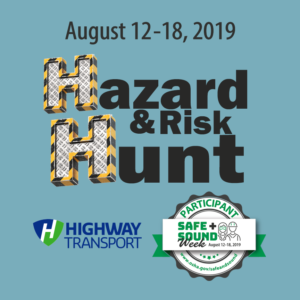
Let’s all try to make the month of August SAFE + SOUND. Remember if you see something unsafe please bring it to someone’s attention. Safety begins and ends with you.
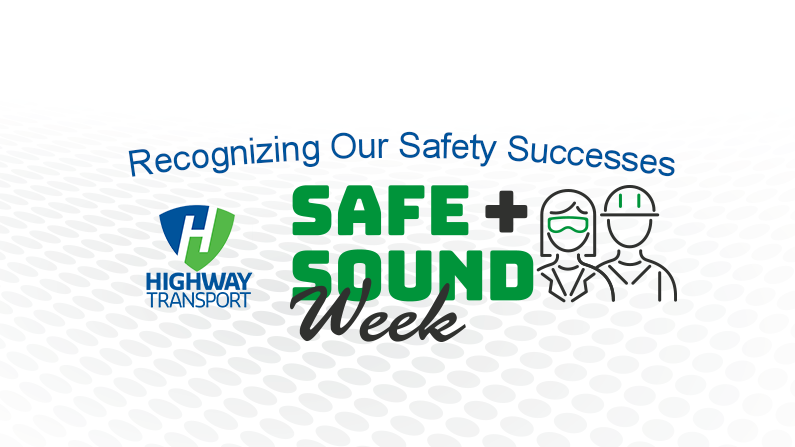
Monday
Monday is the start of OSHA’s Safe + Sound week. We start out the week with Distracted Driving as the focus.
If you aren’t giving your full attention to the road, the cars around you, and the speed limit, you are driving distracted. Click here to read more about National Tank Truck Carrier’s campaign to end distracted driving.
Tuesday
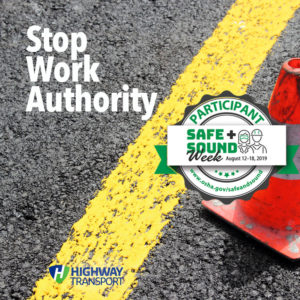 Highway Transport’s safety focus is on the Stop Work Authority process. Safety personnel commonly refer to this using the acronym “SWA.”
Highway Transport’s safety focus is on the Stop Work Authority process. Safety personnel commonly refer to this using the acronym “SWA.”
What is Stop Work Authority (SWA)?
Stop Work Authority (SWA) is a program designed to provide all employees and contract workers with the responsibility and obligation to stop work when a perceived unsafe condition or behavior may result in an unwanted event.
Highway Transport makes sure all employees know they have the authority to stop any work process, then contact their immediate supervisor to investigate, correct the issue, or issues, then resume the job safety, and follow up with other affected employees.
Here is an SWA 6 Step Example
• Stop
• Notify
• Investigate
• Correct
• Resume
• Follow-up (training on lessons learned etc.)

Situations that may Require a Stop Work Action
Stop Work Authority should be initiated for conditions or behaviors that threaten danger or imminent danger to person(s), equipment or the environment. Situations that warrant a SWA may include, but are not limited to the following:
• Alarms
• Change in conditions
• Changes to scope of work or work plan
• Emergency situation
• Equipment used improperly
• Lack of knowledge, understanding or information
• Near-miss incident
• Unsafe conditions at customer loading or unloading
• Mismatched load information, trailer conflicts, etc.
Wednesday
Wednesday we focus on working from heights, which includes climbing stairs, ladders, and for drivers they are required to maintain 3 points of contact while entering/exiting tractor cabs, and climbing the ladders on the trailers.
A driver is supposed to enter and exit their tractor cabs and maintaining 3 points of contact. Mechanics and tank wash employees use their required safety harness and lanyard while accessing the top of our trailers.
Thursday
Personal Protective Equipment & Clothing. Always remember to use PPE&C at home when you’re at work. Also, be sure to use protective gear when you’re working around the house, mowing, using a weed eater, blower, trimming trees or bushes.
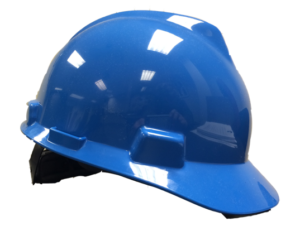 Heads up on hard hat care Employees who use head protection should be trained to: Clean hard hats regularly with warm water and soap, and allow to air dry. Store head protection out of the sun, away from extreme temperatures, and in a safe place (like a locker) where it can’t get knocked around and damaged.
Heads up on hard hat care Employees who use head protection should be trained to: Clean hard hats regularly with warm water and soap, and allow to air dry. Store head protection out of the sun, away from extreme temperatures, and in a safe place (like a locker) where it can’t get knocked around and damaged.
- Check the headband to make sure that it isn’t stretched or worn and that the hat fits comfortably on the head.
- Replace a hard hat if it is cracked, dented, or has taken a heavy blow.
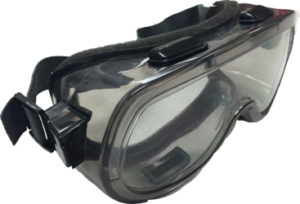 All eyes on safety eye wear maintenance Make sure workers take good care of their eye protection. For example, train employees to: Clean safety glasses and goggles regularly with mild soap and water. Wash lenses with water before wiping to prevent scratching. (If employees don’t have access to clean water, tell them to blow dust and grit from lenses before wiping.)
All eyes on safety eye wear maintenance Make sure workers take good care of their eye protection. For example, train employees to: Clean safety glasses and goggles regularly with mild soap and water. Wash lenses with water before wiping to prevent scratching. (If employees don’t have access to clean water, tell them to blow dust and grit from lenses before wiping.)
- Store eye protection preferably in a clean dust-proof case or in a safe place such as the top shelf of a locker where it won’t get scratched or otherwise damaged.
- Replace safety glasses if frames are bent, and replace goggles if headbands are loose, twisted, knotted, or worn.
- Replace any kind of eye protection if lenses are scratched or pitted and impair vision.
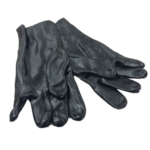 Lend a hand to keep gloves in good shape Be sure to tell workers whether particular gloves are reusable or not and, if reusable, how long they can safely be worn before they should be replaced. Also instruct them to: Keep gloves clean and dry.
Lend a hand to keep gloves in good shape Be sure to tell workers whether particular gloves are reusable or not and, if reusable, how long they can safely be worn before they should be replaced. Also instruct them to: Keep gloves clean and dry.
- Have a backup pair in case gloves get wet (or must be washed) and need to dry. Check for holes, cracks, and other damage before each use. Replace worn or damaged gloves right away.
Put your best foot forward for foot protection It’s easy to forget about safety shoes and other work footwear as long as your feet don’t hurt. But to adequately protect employees against foot hazards, shoes need proper care and maintenance just like any other kind of PPE. To get the best protection from work shoes, employees should: Wipe wet or soiled shoes with a clean cloth or paper towel. Air out work shoes after work, and check regularly for signs of damage or wear.
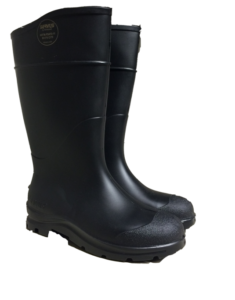
- Have worn or damaged shoes repaired, or replace them. Change socks during the lunch break to keep feet and shoes dry if feet sweat a lot.
Breathe easier with well-maintained respirators After employees use respirators they should: Clean and disinfect them according to manufacturer’s instructions. Check for holes, cracks, deterioration, and any other problems that could interfere with the effectiveness of protection.
- Store in a safe location, protected from dust, light, heat, cold, moisture, and chemicals. Place the respirator so that rubber and plastic parts are in a normal position and hold their shape.
